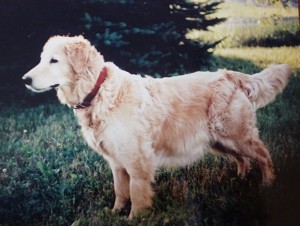(Click on the following link to listen to an audio version of this blog … All Good Dogs
A little over a year ago (April 29, 2022) a team of researchers led by Kathleen Morrill of the University of Massachusetts Chan Medical School published a paper in Science that encapsulated eight years of intensive genetic and behavioral exploration of domesticated dogs (Canis familiaris or Canis lupus familiaris). Both “pure bred” and “mixed breed” dogs were included in this study, and the heritability of specific behaviors and their relationships to breed standards and breed stereotypes were explored. The study clearly showed that breed was a very poor predictor for most behavioral characteristics of individual dogs. The variations of behaviors among individuals of a single breed were in most cases at least as great as the behavioral variations between dogs of different breeds.
Each of the almost 20,000 dogs in this study were described in terms of physical characteristics (size, ear shape, fur length), specific motor patterns (howling, retrieving, pointing) and eight behavioral features (sociability around humans, arousal level (how easily it was stimulated), toy directed motor patterns, biddability (ease of training), agonistic threshold (how easily was it provoked by stimuli), sociability with other dogs, degree to which they interact with their normal environments, and how readily they sought human contact. Correlating the behavioral data with the fully sequenced dog genomes (over 2000 dog genomes were sequenced), eleven specific regions of DNA and 136 “suggestive” regions were identified as influencing these behaviors.
The data clearly showed that all three physical characteristics were very strongly linked to specific genes and were extremely heritable. These physical characteristics were also strongly related to breed. This is not surprising considering that modern breeding of dogs (which began in the mid-19th Century) is primarily focused on physical features and body conformation. The extensive and detailed physical descriptions of each recognized breed in the American Kennel Club Dog Book, for example, reflects this breed-emphasis on physical features.
The behavioral gene sequences, on the other hand, although strongly heritable were not, with a single exception, significantly related to breed. The written and unwritten breed standards and stereotypes with regard to temperament and behaviors were, for the most part, shown to be fictions except for the breed-related behavior of biddability. Biddability (the responsiveness to direction, i.e. the ability and willingness to be trained) while strongly expressed in many type of dogs, was especially seen in any dog that had border collie genes. This suggests that in the development of the border collie, breeders were focused on not only conformational features of their dogs but also their eagerness and ability to accept training.
The explanation for the overall weak relationship of behaviors to breed centers on the very recent onset of breed development. Dogs evolved from wolves and have been associated with people for over 15,000 years. The selection of dogs prior to the mid-19th Century to do specific tasks was based on the individual dog’s expression of certain behaviors that ultimately had been inherited from the dog’s ancient, wolf ancestors. Once a dog had shown itself to be an effective hunting companion, or guard dog, or herding dog that dog was then bred with attention to those desired behaviors. The advent of “pure-bred” lineages, an invention of Victorian England, dealt with aesthetics and appearance to a much greater degree than behavior. The AKC states that “form follows function,” but form was overwhelmingly the center and the purpose of the new, dedicated breeding programs.
So, a breed may have a tendency toward certain behaviors, but individual dogs within that breed can and will have a wide range of inherited, ancestral behaviors. German shorthair pointers may be slightly more likely to point, but many other types of dogs, even some terriers and toys, will also freeze and point at some novel stimulus. Siberian huskies may be slightly more likely than other breeds to howl, but almost any breed will have individual dogs that howl (my dog Kozmo, a mixed breed lab, howled magnificently whenever the nearby volunteer fire department siren went off!). There are retrievers that won’t retrieve and scent hounds and sight hounds that will.
They are all, indeed, good dogs!
Another paper, published at the end of last year in Cell (December 8, 2022), focused on the influence of the “pre-pure bred” human-based selection process for dogs. This study evaluated the genomes of 4000 dogs from 200 different breeds looking for fundamental, ancestral, genetic lineages and groups based on behavior. As Evan Maclean, a canine cognition expert at the University of Arizona (who was not involved in this research), put it, “Much of modern breeding has focused on what dogs look like, but long before we were breeding dogs for their appearances, we were breeding them for behavioral traits.”
This research group identified ten, behavioral lineages that roughly represented groups of dogs that were bred to accomplish specific jobs. Some of these lineages included several modern breeds and groups of dogs while others were more focused and were limited to just a single breed or group. For example, herding dogs, terriers and scent hounds were all found to have a genetic predisposition for high levels of “non-social fear.” This characteristic involves the fear of loud noises or strange objects and seems to represent a heightened sensitivity to and awareness of environmental stimuli.
For terriers, this acute focus on their environment was coupled with high levels of predatory chasing, a perfect combination for dogs bred to hunt and find and kill vermin. For herding dogs, this elevated awareness of their environment was coupled with high biddability and eagerness for training. Again, a very efficient combination of behaviors for dogs who must be taught the complex tasks of animal herding. For scent hounds, the elevated awareness of their environment was coupled with remarkably low levels of biddability and a low willingness for and tolerance of training. These dogs, apparently, can accomplish their tasks of following scent trails better if they follow their instinctive behaviors and are working independently of human control.
Interestingly, most of the specific genes identified in this study were not protein encoding genes. Instead, they were regulatory genes that were involved in modulating and controlling other genes. These genes set the stage for behavioral tendencies rather than directly causing the observed behaviors.
And, finally: in a paper published last summer in Current Biology (August 22, 2022) a research team in Japan found that oxytocin levels in dogs increase when the dogs are re-united with their owners. These rising oxytocin levels then cause the dog to produce tears. These “tears of joy” are a common phenomenon in humans but not in other mammals.
Tears in humans are thought to be a communication mechanism designed to elicit sympathy or empathy. Dogs, having co-evolved with humans for so many years, may be using tears in a similar way.
Wagging tails, happy barking and tears! They all make me happy!







